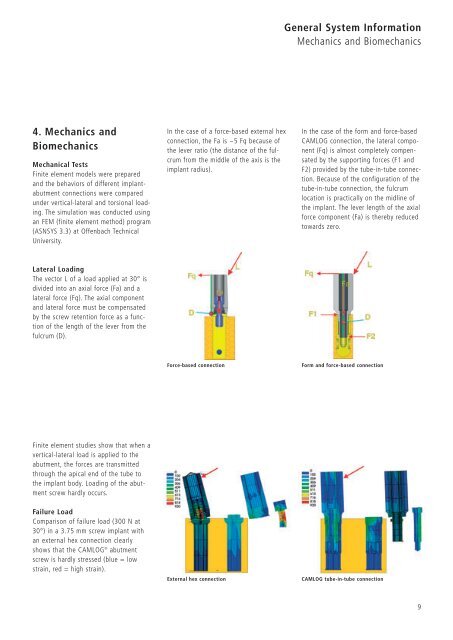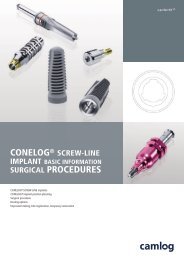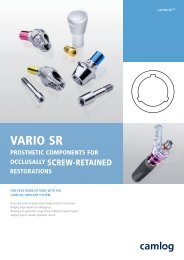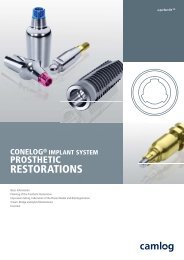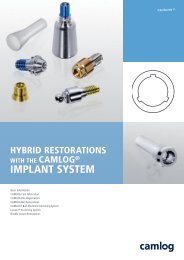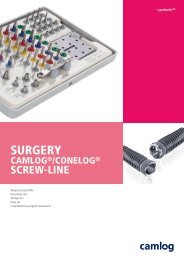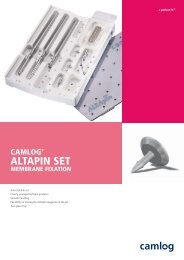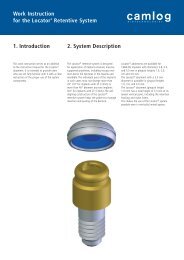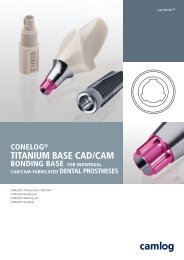1 Surgery CAMLOG Compendium
1 Surgery CAMLOG Compendium
1 Surgery CAMLOG Compendium
You also want an ePaper? Increase the reach of your titles
YUMPU automatically turns print PDFs into web optimized ePapers that Google loves.
4. Mechanics and<br />
Biomechanics<br />
Mechanical Tests<br />
Finite element models were prepared<br />
and the behaviors of different implantabutment<br />
connections were compared<br />
under vertical-lateral and torsional loading.<br />
The simulation was conducted using<br />
an FEM (finite element method) program<br />
(ASNSYS 3.3) at Offenbach Technical<br />
University.<br />
Lateral Loading<br />
The vector L of a load applied at 30° is<br />
divided into an axial force (Fa) and a<br />
lateral force (Fq). The axial component<br />
and lateral force must be compensated<br />
by the screw retention force as a function<br />
of the length of the lever from the<br />
fulcrum (D).<br />
Finite element studies show that when a<br />
vertical-lateral load is applied to the<br />
abutment, the forces are transmitted<br />
through the apical end of the tube to<br />
the implant body. Loading of the abutment<br />
screw hardly occurs.<br />
Failure Load<br />
Comparison of failure load (300 N at<br />
30°) in a 3.75 mm screw implant with<br />
an external hex connection clearly<br />
shows that the <strong>CAMLOG</strong> ® abutment<br />
screw is hardly stressed (blue = low<br />
strain, red = high strain).<br />
In the case of a force-based external hex<br />
connection, the Fa is ~5 Fq because of<br />
the lever ratio (the distance of the fulcrum<br />
from the middle of the axis is the<br />
implant radius).<br />
Force-based connection<br />
General System Information<br />
Mechanics and Biomechanics<br />
In the case of the form and force-based<br />
<strong>CAMLOG</strong> connection, the lateral component<br />
(Fq) is almost completely compensated<br />
by the supporting forces (F1 and<br />
F2) provided by the tube-in-tube connection.<br />
Because of the configuration of the<br />
tube-in-tube connection, the fulcrum<br />
location is practically on the midline of<br />
the implant. The lever length of the axial<br />
force component (Fa) is thereby reduced<br />
towards zero.<br />
Form and force-based connection<br />
External hex connection <strong>CAMLOG</strong> tube-in-tube connection<br />
9


